
Published: February 2020
Author: Bank of England Mortgage Staff
 Having a high credit score is important if you are applying for a loan either for a new home or for renovation of a current home. Your score is important because it tells your lender how responsible you are with money. If you have “maxed out” your cards and take a while to pay them back then your credit score may be low. This tells the lender to be more hesitant when lending you a home loan. But on the other hand, if your credit score is high a lender will be more willing to give you a larger loan with lower interest.
Having a high credit score is important if you are applying for a loan either for a new home or for renovation of a current home. Your score is important because it tells your lender how responsible you are with money. If you have “maxed out” your cards and take a while to pay them back then your credit score may be low. This tells the lender to be more hesitant when lending you a home loan. But on the other hand, if your credit score is high a lender will be more willing to give you a larger loan with lower interest.
If you have been claiming the standard deduction up until now, the extra write-offs from owning a home almost certainly will make you an itemizer. Suddenly, the state taxes you pay and your charitable donations will earn you tax-saving deductions, too. So make sure you know about all these breaks that may now be available to you:
Mortgage interest
For most people, the biggest tax break from owning a home comes from deducting mortgage interest. For tax year prior to 2018, you can deduct interest on up to $1 million of debt used to acquire or improve your home.
For tax years after 2017, the limit is reduced to $750,000 of debt for binding contracts or loans originated after December 16, 2017. For loans prior to this date, the limit is $1 million.Your lender will send you Form 1098 in January listing the mortgage interest you paid during the previous year. That is the amount you deduct on Schedule A. Be sure the 1098 includes any interest you paid from the date you closed on the home to the end of that month. This amount should be listed on your settlement sheet for the home purchase. You can deduct it even if the lender does not include it on the 1098. If you are in the 25% tax bracket, deducting the interest basically means Uncle Sam is paying 25% of it for you.
Points
When you buy a house, you may have to pay "points" to the lender in order to get your mortgage. This charge is usually expressed as a percentage of the loan amount. If the loan is secured by your home and the amount of points you pay is typical for your area, the points are deductible as interest as long as the cash you paid at closing via your down payment equals the points.
For example, if you paid two points (2%) on a $300,000 mortgage—$6,000—you can deduct the points as long as you put at least $6,000 of your own cash into the deal. And believe it or not, you get to deduct the points even if you convinced the seller to pay them for you as part of the deal. The deductible amount should be shown on your 1098 form.
Real estate taxes
You can deduct the local property taxes you pay each year, too. The amount may be shown on a form you receive from your lender, if you pay your taxes through an escrow account. If you pay them directly to the municipality, though, check your records or your checkbook registry. In the year you purchased your residence, you probably reimbursed the seller for real estate taxes he or she had prepaid for time you actually owned the home.
If so, that amount will be shown on your settlement sheet. Include this amount in your real estate tax deduction. Note that you can't deduct payments into your escrow account as real estate taxes. Your deposits are simply money put aside to cover future tax payments. You can deduct only the actual real estate tax amounts paid out of the account during the year.
Beginning in 2018, the total amount of state and local taxes, including property taxes, is limited to $10,000 per tax year.
Mortgage Insurance Premiums
Buyers who make a down payment of less than 20% of a home's cost usually get stuck paying premiums for Mortgage Insurance, which is an extra fee that protects the lender if the borrower fails to repay the loan. For mortgages issued in 2007 or after, home buyers can deduct premiums. This deduction has been extended through 2019.
This write-off phases out as adjusted gross income increases above $50,000 on married filing separate returns and above $100,000 on all other returns. (If you're paying mortgage insurance on a mortgage issued before 2007, you're out of luck on this one.)
Penalty-free IRA payouts for first-time buyers
As a further incentive to homebuyers, the normal 10% penalty for pre-age 59½ withdrawals from traditional IRAs does not apply to first-time home buyers who break into their IRAs to come up with the down payment.
At any age you can withdraw up to $10,000 penalty-free from your IRA to help buy or build a first home for yourself, your spouse, your kids, your grandchildren or even your parents.
But get this: You don't really have to be a first-time homebuyer to qualify. You're considered a first-timer as long as you haven't owned a home for two years. Sounds great, but there's a serious downside.
There's a Roth IRA corollary to this rule, too. The way the rules work make the Roth IRA a great way to save for a first home.
Home Improvements
Save receipts and records for all improvements you make to your home, such as landscaping, storm windows, fences, a new energy-efficient furnace and any additions.
You can't deduct these expenses now, but when you sell your home the cost of the improvements is added to the purchase price of your home to determine the cost basis in your home for tax purposes. Although most home-sale profit is now tax-free, it's possible for the IRS to demand part of your profit when you sell. Keeping track of your basis will help limit the potential tax bill.
Energy Credits
Some energy-saving home improvements to your principal residence can earn you an additional tax break in the form of an energy tax credit worth up to $500. A tax credit is more valuable than a tax deduction because a credit reduces your tax bill dollar-for-dollar.
You can get a credit for up to 10% of the cost of qualifying energy-efficient skylights, outside doors and windows, insulation systems, and roofs, as well as qualifying central air conditioners, heat pumps, furnaces, water heaters, and water boilers.
There is a completely separate credit equal to 30% of the cost of more expensive and exotic energy-efficient equipment, including qualifying solar-powered generators and water heaters. In most cases there is no dollar cap on this credit.
Tax-free Profit on Sale
Another major benefit of owning a home is that the tax law allows you to shelter a large amount of profit from tax if certain conditions are met. If you are single and you owned and lived in the house for at least two of the five years before the sale, then up to $250,000 of profit is tax-free. If you're married and file a joint return, up to $500,000 of the profit is tax-free if one spouse (or both) owned the house as a primary home for two of the five years before the sale, and both spouses lived there for two of the five years before the sale.
Thus, in most cases, taxpayers don't owe any tax on the home-sale profit. (If you sell for a loss, you cannot take a deduction for the loss.)
You can use this exclusion more than once. In fact, you can use it every time you sell a primary home, as long as you owned and lived in it for two of the five years leading up to the sale and have not used the exclusion for another home in the last two years. If your profit exceeds the $250,000/$500,000 limit, the excess is reported as a capital gain on Schedule D.
In certain cases, you can treat part or all of your profit as tax-free even if you don't pass the two-out-of-five-year tests. A partial exclusion is available if you sell your home "early" because of a change of employment, a change of health, or because of other unforeseen circumstances, such as a divorce or multiple births from a single pregnancy.
A partial exclusion means you get part of the $250,000/$500,000 exclusion. If you qualify under one of the exceptions and have lived in the house for one of the five years before the sale, for example, you can exclude up to $125,000 of profit if you're single or $250,000 if you're married—50% of the exclusion of those who meet the two-out-of-five-year test.
Adjusting your withholding
If your new home will increase the size of your mortgage interest deduction or make you an itemizer for the first time, you don't have to wait until you file your tax return to see the savings. You can start collecting the savings right away by adjusting your federal income tax withholding at work, which will boost your take-home pay. Get a W-4 form and its instructions from your employer or go to www.irs.gov.
Original article can be found at: https://turbotax.intuit.com/tax-tips/home-ownership/buying-your-first-home/L5QxJLcQT